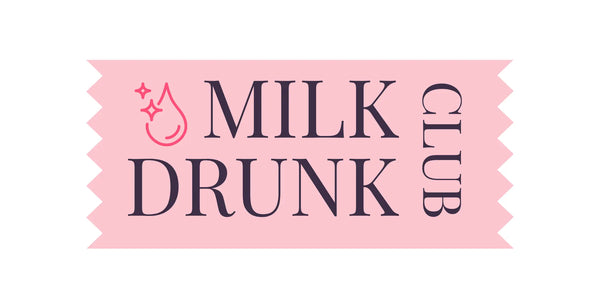Hey Mama,
The first week of breastfeeding is one of the most intense learning curves of motherhood. You and your baby are brand-new at this — and the first seven days are packed with practice, progress, and plenty of questions.
Here’s your day-by-day breastfeeding guide so you know what to expect, what’s normal, and when to ask for help (spoiler: the earlier, the better).
Day 1: Skin-to-Skin + The First Latch
-
Skin-to-skin after birth isn’t just sweet, it’s science. It stabilizes baby’s heart rate, breathing, and temperature while boosting oxytocin and colostrum transfer.
-
Babies are born with instincts — rooting, crawling to the breast, opening wide. Let them lead.
-
Your colostrum may look like drops, but it’s packed with antibodies and concentrated nutrition.
💡 Evidence point: Research shows babies placed skin-to-skin within the first hour are more likely to latch effectively and breastfeed longer term (Widström et al., 2019).
👉 MDC Tip: Forget visitors for a minute. Your only job is to snuggle, smell, and soak up your baby.

Day 2: Breastfeeding Practice + Persistence
-
Expect frequent feeds — 8 to 12 in 24 hours is normal.
-
Babies may start cluster feeding, nursing every hour. They’re working to bring your milk in.
-
Latch may feel awkward. Ask for help early — prenatal consults set you up for success.
🍼 Tools:
-
Nipple check: Is it pinched, creased, or sore after feeds? That signals a shallow latch.
-
Diaper count: At least 1 wet + 1 dirty diaper on day 2.
👉 MDC Tip: Don’t panic if you feel like a human pacifier — your baby is doing exactly what nature designed.
Day 3: Milk “Coming In” + Baby’s Weight Loss
-
Your breasts may feel fuller, heavier, even warm as milk comes in.
-
Some babies lose up to 10% of their birth weight by day 3. This is expected, especially if IV fluids during labor inflated their birth weight.
-
Frequent, effective feeds are the remedy — not formula unless medically indicated.
💡 Evidence point: The Academy of Breastfeeding Medicine (ABM) states weight loss of up to 10% can be normal but should prompt a feeding evaluation (ABM Protocol #2).
👉 MDC Tip: Engorged breasts? Hand express or pump a tiny bit before latching to soften the areola.
Day 4: Diaper Counts = Data Gold
-
By now, you should see 3–4 wet diapers + 3–4 dirty diapers. Stools should be shifting from black meconium to green/yellow.
-
Baby should be alert, waking to feed, and swallowing audibly.
🍼 Tools:
-
Track diapers in an app or journal.
-
If diapers don’t add up, call your IBCLC — don’t wait.
👉 MDC Tip: Poop is proof. Diaper logs are your early warning system.

Day 5: Weight Check + Milk Transfer
-
Pediatrician checkup day. Expect baby to be close to regaining birth weight.
-
Ask for a weighted feed (baby weighed before and after nursing) to see milk transfer.
-
Your breasts should feel softer after feeds, and baby should look satisfied (looser fists, calm body).
💡 Evidence point: Most healthy babies regain their birth weight by 7–10 days with steady gain (ABM Protocol #3).
👉 MDC Tip: Bring your IBCLC’s number to your pediatrician visit — you deserve a team approach.
Day 6: Finding a Rhythm
-
By now, baby’s hunger cues are more obvious: stirring, rooting, sucking hands. (Crying is late-stage hunger.)
-
Expect 6+ wets + 3–4 poops daily.
-
You may feel more confident — or still overwhelmed. Both are normal.
👉 MDC Tip: Babies don’t follow charts. Trust the big picture: diapers, alertness, weight gain.
Day 7: Reflection + Support
-
One week in, you’ve survived the hardest stretch. Celebrate!
-
Reflect: How is your body healing? How is your heart? Do you feel supported?
-
Line up more help if needed: lactation consults, postpartum doula, meal trains.
👉 MDC Tip: You don’t earn a medal for struggling alone. Breastfeeding is natural, but it’s learned — and it’s okay to need coaching.
What If You and Baby Are Separated?
Sometimes NICU stays, health issues, or birth complications mean you can’t nurse right away. Here’s what to do:
-
Begin hand expression within the first hour if possible.
-
Pump 8+ times daily to mimic newborn feeding.
-
Do skin-to-skin as soon as you’re reunited.
💡 Evidence point: Early, frequent milk expression in the first hour supports long-term milk supply (Safari et al., 2018).

🍼 Sidebar: Diaper Count Quick Guide
-
Day 1: 1 wet / 1 stool
-
Day 2: 2 wets / 2 stools
-
Day 3: 3 wets / 2–3 stools
-
Day 4–5: 4–5 wets / 3–4 stools
-
Day 6+: 6+ wets / 3–4 stools
👉 Poop is proof, Mama. Diaper counts are your breastfeeding report card.
Final Thought
The first week of breastfeeding is messy, beautiful, and demanding — but it lays the foundation for your entire journey. Whether your baby is glued to you 24/7 or you’re facing challenges, know this: you are doing important, hard, holy work.
Mama, you’ve got this. And I’ve got you.




